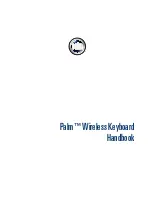
Vintage Keys Operation Manual
103
Programming Basics
Envelope Generators
Envelope
Generators
An envelope can be described as a “contour” which is used to shape the
sound over time in a pre-programmed manner. There are three envelope
generators per layer and all of them are the rate/level type.
This is how the rate/level
(time based)
envelopes work: When a key is
pressed, envelope starts from zero and moves toward the Attack 1 Level at
the Attack 1 Rate. As soon as it reaches this first level, it immediately begins
the next phase and moves toward the Attack 2 level at the Attack 2 rate. As
long as the key is held down, the envelope continues on through the Decay
1 and Decay 2 stages. If the key is still held when the envelope reaches the
end of Decay 2, it simply waits there for you to release the key. When you
release the key, the envelope continues into the Release 1 and Release 2
stages, stopping at the end of the Release 2 stage. Vintage Keys’s envelope
generators provide great flexibility for programming both complex and
simple envelopes.
_
_
_
_
If two adjacent segments
have the same level in a “time-
based” envelope, the segment
will be skipped. Adjacent
segments must have different
levels for the rate control to work.
ADSR mode:
To create
a standard ADSR envelope: Set
Atk1, Atk2 & Dcy1 Level to 100,
Rls 1 & 2 level to 0, and Atk2,
Dcy1, Rls2 Rates to 0. Program
Atk1, Dcy2 and Rls1 segments
as you wish. See page 201.
All three envelope generators have the six stages described above. The
Volume Envelope generator controls the volume of the voice over time.
The Filter Envelope generator is a general purpose envelope most often
used to control the filter frequency. Unlike the Volume Envelope, however,
the Filter Envelope can have a negative level value as well as a positive
level. There is also an Auxiliary Envelope generator which is a general
purpose envelope. The Auxiliary Envelope is identical to the Filter Envelope
and can have negative as well as positive levels. You can adjust the time of
each stage to create myriad envelope shapes, which in turn shape the
sound over time.
O
O
O
O
By routing the Auxiliary
or Filter Envelopes to control the
pitch (PatchCords) you can
easily hear the shape of the
envelopes you are creating.
•
Volume envelopes contour the way the volume of a sound changes
over time determining how we perceive that sound. For example, a
bell struck with a hammer is instantly at full volume, then slowly dies
away. A bowed violin sound fades in more slowly and dies away
slowly. Using Vintage Keys’s Volume Envelope, you can simulate the
different types of natural instrument volume envelopes by program-
ming them appropriately.
Atk1
Atk2
Dcy1
Dcy2
Rls1
Rls2
Key
Down
Key
Released
Sustain
Level
time
level
















































